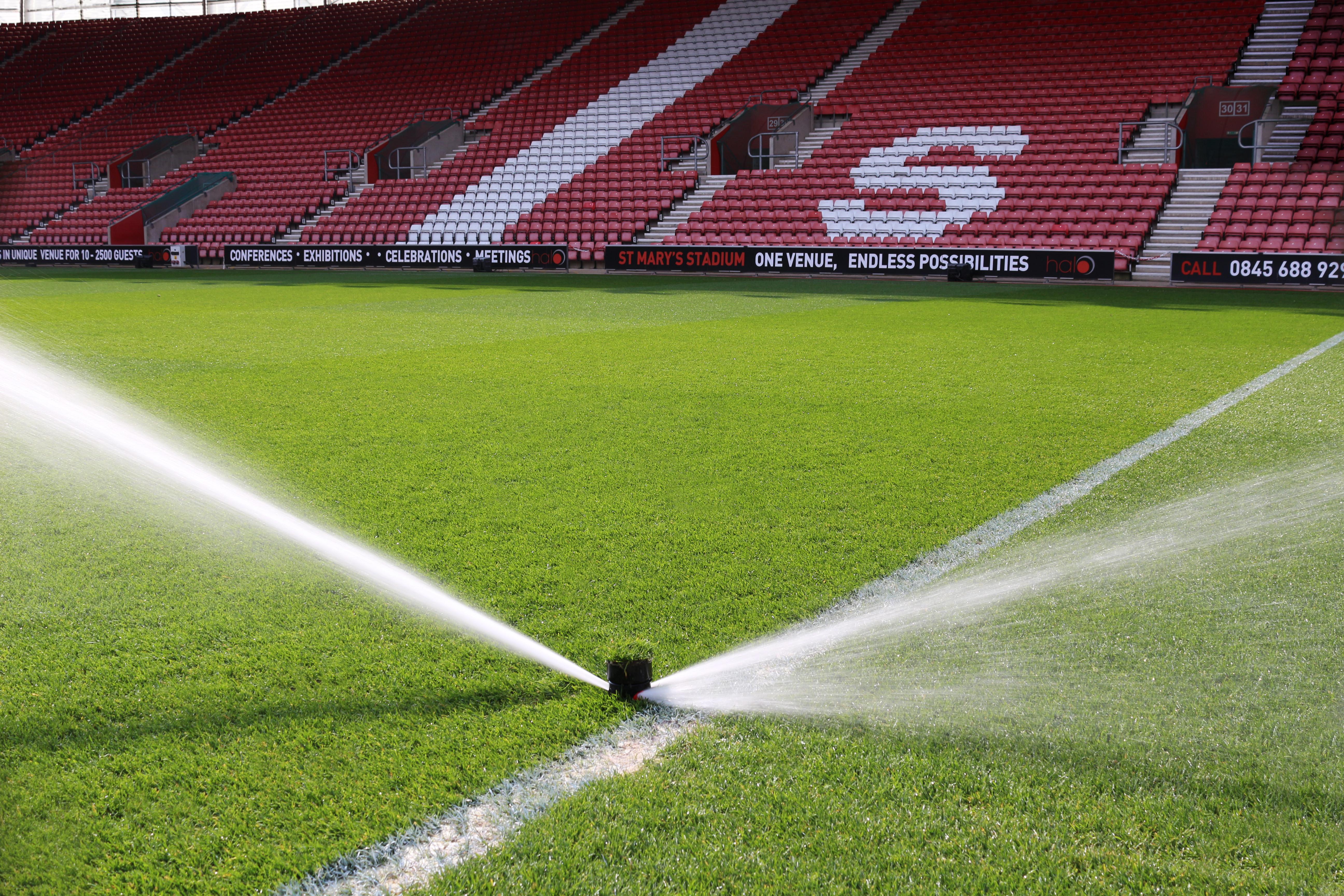
Site Profile
St. Mary's Stadium in Southampton, England, has been the home stadium of Premier League club, Southampton F.C. since 2001. The stadium has a capacity of 32,505 and is currently the largest football stadium in the South of England.
The natural turf field requires renovation every five years. Free-draining, sand-based pitches like St. Mary’s have become increasing popular and a standard for top flight football. The season runs from August to May, which can be rainy, so free-draining surfaces are a must. Pre-match and half time watering is needed for proper ball speed across the surface.
The grounds manager wanted to incorporate rotors that would reduce the amount of watering time and increase water volume during halftime to improve playability. At the adjacent Staplewood training grounds, it was important to meet the demand of all the different training squads needing pitches wet and slick at similar times.
Grounds Manager, Andy Gray, oversees both St. Mary’s and Staplewood. Together Gray and the Head Groundsman at Staplewood, Graeme Mills, formulated the specifications for the new system design to meet their goals of reducing the halftime watering window and eliminating the need to turn on the perimeter rotors, which can decrease spectators' enjoyment.
At the stadium, they chose to use six Hunter I-90’s in the field center because of the longer throw that would apply water all the way to the sidelines without the need for side sprinklers at halftime. For system control, they selected Hunter’s ACC-99D, with ROAM remotes for manual watering, and IMMS central control with GPRS connection so they could adjust, change, run, and monitor the system from anywhere.
To realize cost and time savings, installation at St. Mary's would be undertaken in conjunction with the redevelopment and extension of the Staplewood Training Center. To maintain the high standards applied at the stadium, the conventional soil was dug up and the pitch was reconstructed out of fibre sand. The system hydraulics were increased to provide greater flow to leverage G995E and I-90-36V with turf cups to reduce the nightly watering window. To maximize efficiency, control was provided by Hunter Surveyor, which offers flow management and mobile phone connectivity.
At the stadium, operating three I-90 rotors at a time, 4 minutes (360 arc) x 2 stations, they reduced the watering time from 13 minutes to 8 minutes and still kept the turf looking green and healthy. We used to water for 13 minutes before kickoff and at half time with the old set up. Although it only saves a few minutes before a match and at half time, the I-90s give better coverage, allowing us to get the surface a lot wetter, quicker," said Gray.
At the training grounds, pitches can now be irrigated at the same time, and controlled from anywhere.
The team selected Hunter because of the proven performance, quality, and customer service. “We had Hunter products previously and they proved very reliable. There was no reason to look any further than Hunter for the new systems on the stadium and training ground,” said Gray.

